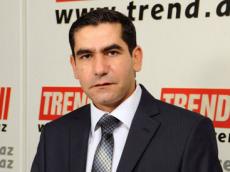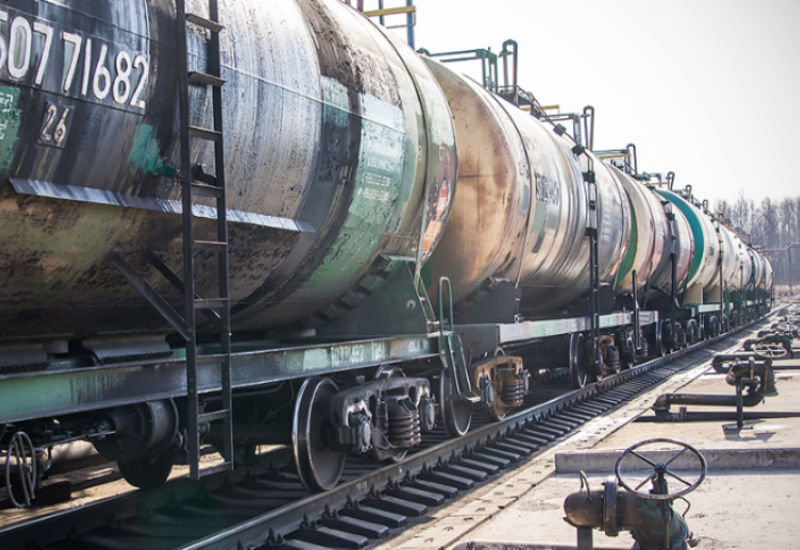|
|
TODAY.AZ / Analytics
Iran's nuclear accord; All's well that ends well
22 January 2014 [10:30] - TODAY.AZ

After nine years of extreme disputes, Iran and the international community reached a historical accord and that was implemented on Jan.20.
I said international community because the United Nations and all major countries involved in applying restrictive measures to curb Iran's hidden and suspicious nuclear activities were suspected to be used to build an A-bomb.
Iran has repeatedly announced that the enrichment uranium is aimed to produce nuclear fuel for power plants, but supplying the fuel of Iran's only nuclear power plant Bushehr, is guaranteed by Russia for 10 years.
Russia delivered 82 tons of nuclear fuel in 2008 and 30 more tons in May 2011 to Iran. This amount meets the Bushehr NPP's fuel needs for four years.
According to the International Atomic Energy Agency (IAEA) when issuing a publication on November 2013, Iran enriched 196 kg of 19.75 percent-enriched U-235 which was diluted or converted to oxide uranium- Uco8- on Jan.20.
Iran's total 3.5 percent low enriched uranium (LEU) production at the Natanz enrichment plant through November 5, 2013, is reported to be 10,357 kg, including 653 kg estimated by Iran to have been produced since August 11, 2013.
Iran diluted about 100 kg of nearly 20 percent pure U-235 to 450 kg of LEU on Monday. The arranged 164-centrifuge cascades have been disconnected, but are still active and produce LEU.
Iran currently has enough 19.75 percent enriched nuclear fuel to meet the Tehran Research Reactor (TRR) for four years.
This means Iran needs neither 3.5 percent nor 19.75 percent pure nuclear fuel for four years.
Iran has installed 18,458 IR-1 centrifuges and 1008 IR-2m centrifuges, of which only 9000 are active,but has to launch about 60,000 centrifuges to produce nuclear fuel at an industrial scale to feed a 1000-megawat power plant the size of Bushehr.
In total, Iran fed 118,470 kg of 0.711 percent pure hexafluoride uranium (natural uranium) to centrifuges yet to produce 10,375 kg of LEU and 410 kg of 20 percent U-235. However, Iran's total raw uranium resources are very low, amounting to 1527 tons.
Iran announced on February 2013 that recently discovered new mines would triple the country's raw uranium resources. This amount is very low for a country scheduled to build 20 nuclear power plants with 600 tons fuel consumption annually and needs to process above 10,000 tons of raw uranium per year.
What was the result of hardliner's decision?
In case we accept Iran's declared goal, namely enriching uranium for building nuclear fuel, it seems the country's risks are incomparable with its rewards.
Iran's only nuclear power plant's total power production capacity in the case of coming on stream completely, is about 1000 megawatts which shares only 1.3 percent of the country's current electricity output. This is while the cost of 30 tons nuclear fuel needed for its operation is about $50 million per year.
However, Iran's annual loss from decreasing its oil exports during the past two years is above $40 billion, while imposed sanctions halved the country's auto production amount which is the second major industry after the oil sector. The other sectors are in a similar situation which led to a 5.8 percent-contraction of Iran's GDP during the past year.
The cost of development of Iran's giant gas field South Pars has been doubled and according to the Deputy Oil Minister Roknaddin Javadi's statement, Iran loses $36 billion annually due to delays in completion of the field.
The new accord brought new blood back into Iran's economy recovery and can provide Iran with great opportunities in the case of the hardliners being allowed to progress nuclear talks.
Dalga Khatinoglu /Trend/
URL: http://www.today.az/news/analytics/130180.html
 Print version
Print version
Connect with us. Get latest news and updates.
See Also
- 16 December 2025 [13:49]
Why Iran fears Corridor that Armenia sees as lifeline - 15 December 2025 [17:13]
SOCAR Deputy VP says integrity management is key to long-term energy security [EXCLUSIVE] - 15 December 2025 [13:57]
Azerbaijan’s investment landscape expands with rising foreign participation - 12 December 2025 [20:10]
EU-Armenia partnership document raises questions on commitment to peace - 11 December 2025 [14:00]
Azerbaijan’s patience pays off as 907 Amendment nears its end - 11 December 2025 [08:30]
Emerson experts highlight how robotics transforming corrosion monitoring - 10 December 2025 [14:23]
Garabagh emerges as new investment hub ahead of major forum - 07 December 2025 [15:27]
Kocharyan’s reckless rhetoric exposes real enemy of Armenia’s future - 04 December 2025 [20:43]
Yerevan’s narrative on detainees masks domestic politics [OPINION] - 04 December 2025 [08:30]
Azerbaijan unveils AI platform in bid to become Caucasus innovation hub
Most Popular
 Hornet's nest has been stirred up: how topic of Western Azerbaijan scared revanchists
Hornet's nest has been stirred up: how topic of Western Azerbaijan scared revanchists
 Azerbaijani oil scares demagogues in Yerevan: where is common sense?
Azerbaijani oil scares demagogues in Yerevan: where is common sense?
 South Korea to enforce new AI regulations amid industry concerns
South Korea to enforce new AI regulations amid industry concerns
 Pashinyan once again spoke out against Garegin
Pashinyan once again spoke out against Garegin
 Memorial exhibition in honor of Rasim Nazirov opens in Baku
Memorial exhibition in honor of Rasim Nazirov opens in Baku
 Zelensky signals willingness to trade NATO bid for strong security guarantees
Zelensky signals willingness to trade NATO bid for strong security guarantees
 Iran says IAEA Chief’s uranium report changes nothing
Iran says IAEA Chief’s uranium report changes nothing
